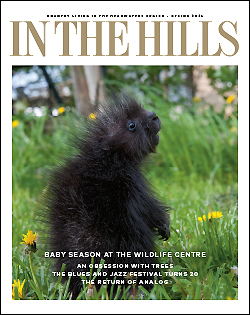Warblers are Tropical Emissaries
Lured by warm weather and a bonanza of insects, warblers return from tropical realms. By Don Scallen.
Decorated in gaudy yellows, oranges, blues and greens, warblers are achingly lovely.
By Don Scallen
After spending most of the year in sun-soaked Jamaican mangroves, Costa Rican cloud forests or verdant Guyanese jungles, these emissaries of tropical realms travel in spring to our hills, bringing with them a little of the flamboyant colour of the tropics.
It is a marvel that such tiny creatures choose to make a hazardous journey of thousands of kilometres to spend the summer with us.
Also by Don Scallen — “Warblers: A Storm of Angels” (from our Spring 2009 issue). Read the article here.
The lure is Canada’s warm weather bonanza of flies, spiders and caterpillars. This seasonal bounty of protein satisfies the prodigious appetites of warbler young.
Seventeen species of warbler nest in our hills and many other varieties of warbler pass through on their way to the boreal northland. Almost all are completely dependent on trees, so woodland glades and shrubby forest edges are the best places to look for them.
At this time of year though simply stepping out into your backyard may offer a chance to see a warbler. They often stop to refuel in suburbia after arduous night flights.
Catching sight of these visitors can be challenging, however, even for seasoned birders. They flit constantly and often forage at neck-straining heights. Listen for their brief bursts of exultant sound. Then watch patiently for motion. If you make this effort you will eventually be rewarded with a sighting.
And then, I suspect, you will be smitten. A magnolia or blackburnian warbler feeding among freshly unfurled leaves can be a life-altering experience.
****
Don Scallen is a naturalist who teaches elementary school science.







